We've been eating well since getting home. The first evening we rummaged through the garden for a pasta dinner with a medley of fresh vegetables. It was just really exciting to discover what was growing, instead of going shopping.
Saturday morning's trip to St. Lawrence market resulted in a dinner of barbecued fresh corn (better than any corn we were able to get in Washington - they don't have the peaches and cream variety), salmon (there's a record run of sockeye in the Fraser River, so Mark was very excited to get some of that while it's on), two small eggplants from the garden, and a salad of mizuna, tomato, basil and cucumber, also from the garden.
And yesterday I went on something of a cooking marathon, which was odd since the weather was up to 34 degrees and I had the oven going for hours. Nevertheless I made a peach pie, with fresh peaches from the market, and pastry made from scratch using Cook's Illustrated's recipe using vodka as the secret ingredient for great flakiness. Then for dinner I roasted plum tomatoes and shelled bush and purple pole beans with thyme and rosemary (all from the garden) plus some pancetta, served with chard (also from the garden). It's great to have so much time to cook up ambitious meals, and to have so much fresh produce to work with from that's right at our doorstep.
In the works: figuring out how to use our bumper crop of chard!
Tuesday, August 31, 2010
Friday, August 27, 2010
August 27, 2010: Toronto - A Return To The Great Outdoors
So nice to be back in a temperate climate. Had a frenzy of outdoor activity, trimming hedges and pruning bushes. It feels amazing to be able to stay outside for hours without overheating. Washington was great, but I did feel cooped up indoors in the air conditioning by the end.
August 26, 2010: Washington - Home Again, Home Again
Today we returned to Toronto, flying home from Reagan Airport. It was an easy $1.60 subway ride to the airport (how I wish we could do that in Toronto!). We enjoyed watching Zombieland on my iPod Touch on the way (the flight was too short to fit it all in, but we finished it off on the subway ride across Toronto).
We made ourselves a pasta meal with a harvest from the garden (chard, roasted Hubbard and summer squash, tomatoes, purple pole beans) and enjoyed the novel sensation of sitting outside without oppressive heat, and having ready access to private green space. Washington was great, but it's so nice to be home.
We made ourselves a pasta meal with a harvest from the garden (chard, roasted Hubbard and summer squash, tomatoes, purple pole beans) and enjoyed the novel sensation of sitting outside without oppressive heat, and having ready access to private green space. Washington was great, but it's so nice to be home.
Lions of Washington DC






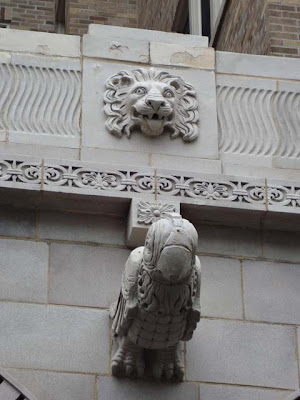



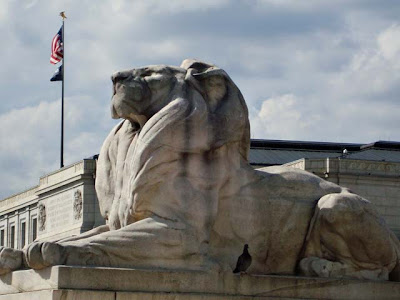


The first place we visited in Washington DC, the National Zoo, has two striking lion sculptures at the entrance. Not long after we visited the Corcoran Gallery, which also has lions guarding the door. Once I started looking for them, they were everywhere. So here's my tribute to the lions of Washington DC.
Photos: lions decorate the crest of Calvert House, our apartment building; one of two bronze lions by Roland Hinton Perry guarding the National Zoo; the originals, cast in concrete, were installed on the Taft Bridge; the lion with the most personality (a bronze cast of the original marble by Antonio Canova) at the Corcoran Gallery; lion doorknocker at the Corcoran; lion inside the Building Museum; lion on an apartment en route to Dupont Circle; lion outside an apartment in Woodley Park; lion lamp for sale in Cleveland Park; lion in the Ulysses S. Grant memorial by Henry Merwin Shrady at the US Capitol; lion in the Christopher Columbus Fountain by Lorado Taft outside Union Station; lion at Lafayette Park; lion fountain in Georgetown - one last lion found on our last night in town!
Washington - Metro





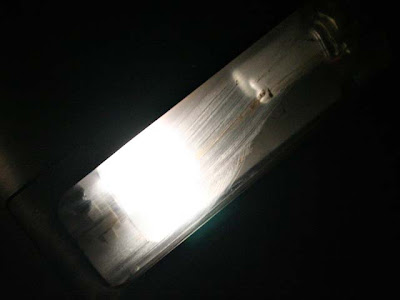

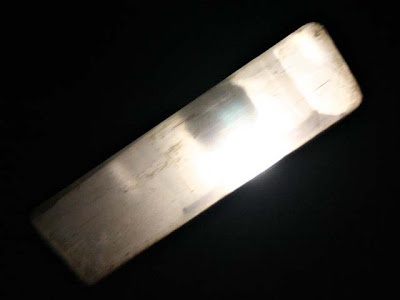
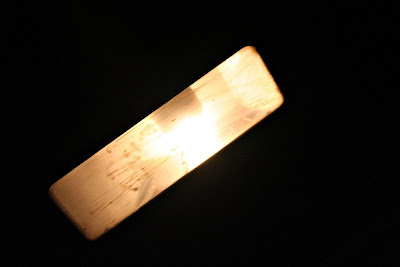
I spent a lot of time riding the Washington Metro - sometimes it felt like more time riding the escalator up and down at the Woodley Park station than was actually spent on the train. So here's my photo tribute to Metro.
Photos: the impressively large station tunnel (which, however, looks exactly like every other station - visually not that helpful in figuring out where you are); the longer of two escalators at Woodley Park, the deepest station in the system; a series of photos of the lights on the side of the escalator, which had a seemingly infinite array of bulb types and positions - which is only fascinating if you're escalator ride seems infinitely long
August 25, 2010: Washington - Alexandria, Library of Congress, Farmers Fiasco









For my last day in Washington I decided to take the subway out to Alexandria. After driving through it on the way to Mount Vernon I had been more motivated to make the trek.
Alexandria turned out to be bigger than I'd expected - the main street is a quaint historic shopping area, but it goes on forever - furniture stores, antiques, galleries - until ending at a lovely waterfront area with docks and industrial buildings converted to artists studios.
My first visit was to the Lyceum, the town's historical museum. This was a little disappointing - not much to see or read, although it did highlight the fact that Alexandria was occupied territory under martial law during the Civil War, which would have made life very difficult for all those who chose to stay put. Alexandria had actually been part of the District of Columbia, but had voted to rejoin the state of Virginia, since being part of DC hadn't turned out to be as profitable as hoped.
Next was the Apothecary Museum. This was great - an enthusiastic docent led us on tours of both the shop (which went bankrupt in the early 1930s, resulting in the preservation of both the shop and its contents) and a manufacturing area, filled with hundreds of jars, drawers and tins of plants and chemicals. In addition to producing medicines they also produced paints and perfumes, which had similar production processes.
At the waterfront I visited the Archaeology Museum. It was more of a municipal department that was open to the public, but there was some interesting information about finds in the area, and a very knowledgeable volunteer (a retired archaeologist). Oldest find is a Clovis arrowhead; more typical are Civil War era gravesites and military paraphernalia.
On my way back to the subway I walked up to the Washington Masonic monument - a very tall tower with a view down the main street and across the river to Washington DC. If I'd had more time I would have climbed to the top, but I had one more quick stop to make.
In looking over the photos from this trip I realized I hadn't taken many at all at the Library of Congress, in spite of finding the building to be really amazing. It was probably a combination of the heat that day (I definitely lose motivation to photograph when exhausted from the heat), the tour (long and interesting - not much time to photograph), the crowds, and the storm that blew up just at the end of that day. So I went back to spend a little more time looking around the building - it was only open until 5:30, but much less crowded at the end of the day. And without the storm brewing I was able to walk around outside to appreciate the fountain and the dome on top.
For dinner I had made reservations at Farmers & Fishers, a well-known Georgetown restaurant that is owned by a collective of farmers, promotes local, fresh farm produce and was a hot item during DC Restaurant Week. Sadly, I have to conclude that it's a bit of a tourist trap. We had reservations, but still had to wait 30 minutes to be seated. There wasn't any bread or other snack at the table, so we were ravenous by the time our order arrived. I couldn't even get by on the sustenance from my beer, since it didn't show up until after my food. The ingredients were all good, but the flavours competed and overrode any unity. I should have known from the somewhat Florida-esque waterfront fountain in front that this would be all show.
Photos: the Apothecary Museum; a bottle in the window; display case with perfumes; shelves of original bottles; the manufacturing room with paint chips and drawer's of "dragon's blood"; more ingredients storage (still filled with original contents); tobacco grown in the flower beds in front of the Masonic Washington tower (note that someone has already harvested the mature lower leaves); the monument, towering over Alexandria; a panoramic view of Alexandria over the large "G" at the tower's base (which reminds me of the big "S" on Superman's outfit)
Tuesday, August 24, 2010
August 24, 2010: Washington - Endangered Plants, The Castle, African Art












I'd been waiting for the exhibition Losing Paradise?, illustrations of endangered plants, to open at the Natural History Museum. The illustrations were done by a variety of artists from the American Society of Botanical Artists. Most were quite good, although less scientific than I'd expected - few had indications of scale or close-up views of the various plant parts necessary for species identification. Still, there were some very skillful and beautiful paintings of the overall appearance of the plant. There was even one Carex species (dear to my heart, since I illustrated over 120 species as an undergraduate).
While I was there I also made a quick stop to visit the Hope diamond, which had been too crowded to see when I was there before. It's set up for maximum viewing: on an angled pedestal in a glass case in the middle of a room, rotating every few seconds and lighting up so that all can get a glimpse before it rotates to the next set of viewers.
Then I headed across the Mall to The Smithsonian Castle - the first Smithsonian building, which is now primarily a visitor's center. It did, however, have an exhibition of Madeleine Albright's pins ("Read My Pins") which I had a review of previously. It seemed like it might be dull (costume jewelry of a diplomat)but it was really fun and engaging. She had quite a sense of humour about what pins to wear (like a stinging insect when diplomatic negotiations were irritating her), and there were some very creative pieces (like a zebra that basically lounged across her shoulder, which she wore to meet Nelson Mandela).
My final stop for the day was the African Art Museum. The building is a mirror image of the Sackler Gallery, with just a small ground-level entry area, with the majority of the building going down three levels underground. There was an impressive exhibition of African and African American basket work, as well as an interesting array of permanent artifacts. The strangest was a statue of a man, said to be wearing "a prestige cap worn by men of high status". But the hat looked to me very much like a brain - two halves with curlicue patterns, and even a round knob in the back that could be the cerebellum. The idea of a man wearing his own (or someone else's) brain as a hat is pretty disturbing.
Photos: Carex pseudocyperus by Betsy Rogers-Knox; Pitcher's thistle by Derek Norman; crowds clustered around the 45.52 carat Hope Diamond; exterior of the Smithsonian Castle; interior of the Castle; interior of the African Art Museum; 20th century mask from Nigeria with horns; uncanny similarities between a crucifix (17th century, Congo) and a 19th/20th century iron staff figure from Mali; front view of the 19th/20th century Cameroon mask with possible brain motif; rear view of the mask - note the 'cerebellar' circle along the mid-line.
August 23, 2010: Washington - National Arboretum
















I had been debating whether I would get out to visit the National Arboretum. I definitely wanted to go, but getting there by transit would involve a Metro ride and a bus, then a walk - all of it on the dodgy east side of town, so I didn't want to do that one my own. It also seemed like it would be reasonable to take a taxi, as long as we could arrange to get one back at the end of the day - tricky to arrange without a cell phone and not knowing what the phone access would be like there. In the end Mark agreed to accompany me on this slightly iffy adventure, and we took a taxi from Union Station. In most respects the neighbourhood looked less alarming than it had when we took the Metro to the nearby Kennilworth Aquatic Gardens, so we might have been just fine taking public transit.
The arboretum grounds were beautiful, and definitely worth the effort of figuring out how to get there. First up was an extensive collection of bonsai trees, and an exhibition which did a good job of demonstrating how a bonsai is created. The oldest tree has been "in training" (as they phrase it) since 1625!
After the bonsai we ate lunch under a leafy enclosure, walked through the herb garden, and then headed over to the set of former US Capitol building pillars - removed during a renovation and now standing in the middle of an empty field, like a relic of an ancient building. Then we visited Fern Valley, which was mostly closed to visitors - they'd had some major damage during a recent storm. We continued around the park to the Asian gardens (set on a very steep slope - I wouldn't want to be on that path when the rain comes rushing down), the river's edge (looks like you could take a boat to the Arboretum), the dwarf and slow-growing conifers (not as much fun as the dwarf and slow-growing bonsai) and back to the visitor's center.
We'd been saving up the experience of feeding the fish since we first entered the visitor's center and saw them. They have a coin-operated fish food machine and a pond full of huge koi. Just leaning over the edge induces a swarm of gaping fish mouths, but feeding them set off a real frenzy. This was definitely the highlight of the day for Mark.
The friendly attendant at the visitor's center called a taxi for us (although it took two tries) and we headed back to Union Station, safe and sound in central DC.
Photos: a gingko espalier (I've never seen this done with anything other than fruit trees, but why not?); bonsai (it didn't occur to me to note the dates/species on the first few than I photographed, but the third one is a Trident Maple age unknown, the fourth is a California Juniper from 1964, the fifth is a Chinese Banyan from 1971, the sixth is Foemina Juniper from 1974, and the seventh is a Japanese White Pine from 1625!; US Caitol pillars; Mark helps hold a pillar up; a happy insect hanging out on a tree (there were many others of the same insects); beautiful red grass in the Asian garden; a meadow with colourful flowering trees; Mark sets off a feeding frenzy; ripples reflecting the 60s-style modernist building
Subscribe to:
Posts (Atom)
